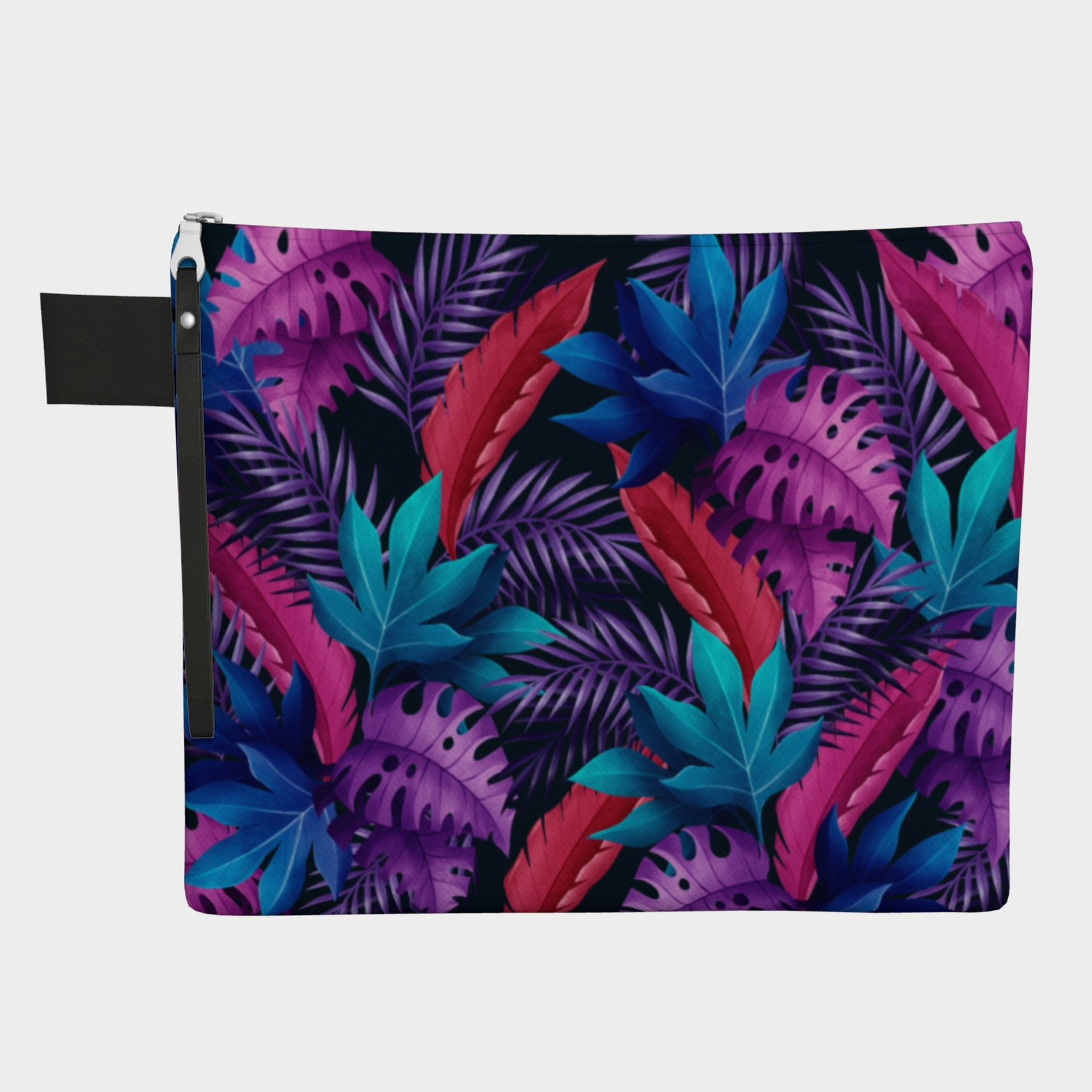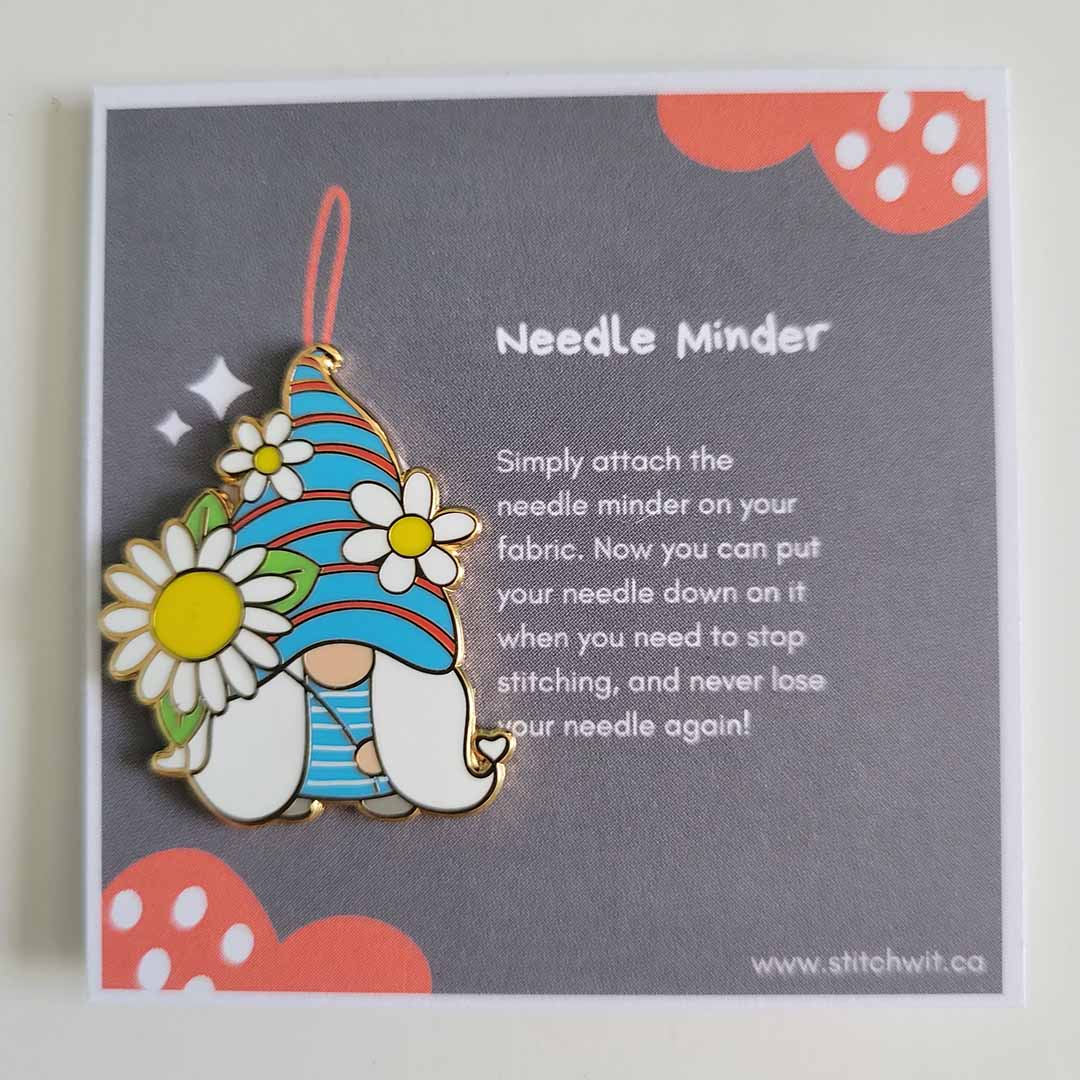How to Cross Stitch: A Stitch Wit Beginners Guide to Counted Cross Stitch
If you just search Google, Etsy or Facebook it's quite obvious cross-stitching is gaining in popularity. It's a craft that many people all over the world have a love for.
So what is counted cross stitch?
Cross stitch is a form of hand embroidery and has been around for years and years, it's also one of the easiest forms of hand embroidery to learn. Cross stitch is like a bunch of pixels but instead of little blocks, picture little x-shaped stitches to create an image. Counted cross stitch is done on fabrics that have an even weave - most commonly used is Aida cloth and linens.
Stitch Wit counted cross stitch patterns and kits are a great place for beginners to learn because all of my designs are in 14-count, and only require the basic cross-stitch (no back stitches or fancy stitches!)
What is the difference in stitch counts? What does 14ct, 18ct, etc. mean?
As I just mentioned, cross-stitching is made up of little x-shaped stitches. So keeping that in mind, a 14ct means 14 x-shaped stitches per every inch of fabric. An 18ct has 18 x-shaped stitches per inch, and so on and so on. It is common for beginners to start with a 14 count pattern.
Counted cross stitch patterns are usually sold as the pattern (or chart) alone, or as kits. When you buy a pattern, you are just getting the chart of the design. With kits, you get the pattern and the needed supplies (the fabric and floss).
For the following guide, I am using a Stitch Wit pattern as an example, but these steps can be applied to most available counted cross stitch patterns and kits.
Reading a Cross Stitch Chart
You can think of a counted cross stitch chart as a paint by number kit. Except instead of paint, you are using floss and stitches to create an image.
A cross stitch pattern gives you all the details you need to know about where to stitch and what colour floss to use. Most patterns (and all of Stitch Wit patterns) include:
- A stitched preview of what your piece should look like when completed
- A chart map
- A chart
- A floss legend
Chart Maps
Depending on the size of the design, the chart may be multiple pages long (and if it's a Stitch Wit pattern, it definitely does!) For multiple page charts you will be given a chart map: 
As you can see, the chart map tells you how to follow the chart page by page. It basically lays out all the pages to show you the full design.
Charts
Charts are made up of grids. The grid on the chart corresponds to the grid of the holes found on the weave of your fabric. Each symbol (or coloured block) represents one x-shaped stitch on your fabric. Blank spaces mean no stitches go there. Here is an example from a chart:

Along with the chart, the pattern will include a floss legend. The legend tells you the corresponding symbols to DMC floss colour, how many strands to use and how much floss is needed:

Starting your Project
Even those who have been cross stitching for years tend to grid their fabric (or use a pre-grided fabric). It just makes life sooo much easier! It helps keep track of your stitches and not lose place on the chart. Charts are grided in 10 x 10 boxes, so you grid the fabric in the same way. Here is an example of a fabric that has a grid:

Stitchers tend to use floss (as shown in the image above) or a fabric pencil/marker to create their grids. I will be writing a blog post specifically on gridding your fabric in the future, but as you can imagine you grid the fabric in 10 x 10 blocks to match the pattern chart in size. Make sure you leave at least a 2" border on all sides of the fabric for finishing/framing. The only reason I even bring up gridding your fabric is that it comes into play when discussing where to start stitching, which is coming up soon!
Getting your Fabric Ready
So you've gridded your fabric (or you're a brave one and skipped that step!) now it's time to get it ready to stitch on. Since Aida and linen are woven fabrics, they tend to fray at the edges. You don't want to lose fabric to fraying, so it is a good idea to either bind the edges with masking tape (easiest way, and the way I do it) or by sewing a zig-zag stitch along the edges. Both methods will minimize fraying from handling your projects.
Using Hoops and Frames
Hoops and frames help keep the area of fabric you are stitching on nice and even, and frankly just makes stitching easier to do. Hoops can be moved around on your fabric to the area you are working on. Frames tend to be used for larger projects. Make sure not to pull the fabric too tight or it will distort the weave on your fabric.
Let's Stitch!
Some cross-stitchers start their projects in the middle of the chart. Personally, I do not, and I really don't like that method. It's just asking for me to make mistakes! The whole point of gridding your fabric is to make it match your chart perfectly. So starting on page 1, stitch 1 (top left corner), and continuing as you would read a book, just makes sense.
Preparing your Floss
Most 14ct counted cross stitch patterns require two strands of floss when you are stitching (all Stitch Wit patterns do). If this is the case, the most efficient way to work with your floss is to use the loop method. So the following steps are based on using the loop method.
Pick the colour of floss you will be starting with. Even though the pattern requires two strands, with the loop method you only need to work with one. DMC floss is made up of six strands of thread twisted together. To separate out one strand, hold the floss with one hand and pinch the end of one strand with the other. Gently and slowly pull the strand up and out until it is separated from the rest of the strands. Cut the length of your one strand to about 36 inches long.
Thread your Needle
Take your 36 inches long one strand of floss and fold it in half. Thread the two loose ends through the eye of your needle, pulling them through about one inch. This should leave a long tail with a loop on the end.
Making your First Stitches
Grab your fabric, and start where you need to make your first stitch. Bring your needle up from the back (if you look at the image below, you are bringing the needle up from the back in hole 1). Now bring your needle down through the front of your fabric into where hole 2 is in the image below. Don't pull your floss all the way through. Turn your fabric over, and thread your needle through the loop in your floss. Gently pull the thread so it is taut (but not too tight). This will secure it in place. Turn your fabric over again so the front is facing you, and bring your needle back up through the third hole as shown below. Bring your needle back down into the fourth hole as shown. TA-DA! You just completed your first basic cross stitch using the loop method! Now continue on as shown below, continually making your cross stitches.

Ending your Floss
Keep stitching until you reach the end of your floss or you need to change colours. On the back of your fabric, pass the needle under at least three completed stitches to secure the floss. Trim the remaining floss, but be careful you don't cut too close or it may come loose. Here is an example:

Keep following the above guide, and in no time you will become very comfortable with cross-stitching. Don't worry if you make a mistake. Stitches can be taken out, or even worked around. Little imperfections are what makes each piece unique.
If you are looking for a great video tutorial, I highly suggest checking out the. Peacock and Fig YouTube Channel.







Leave a comment